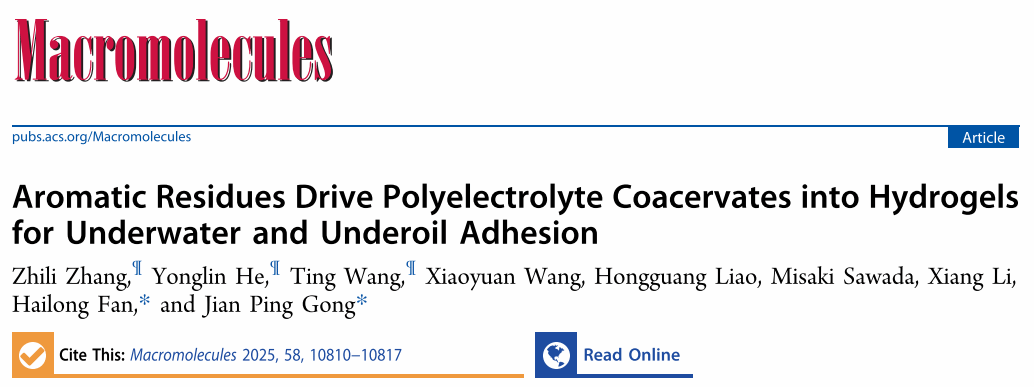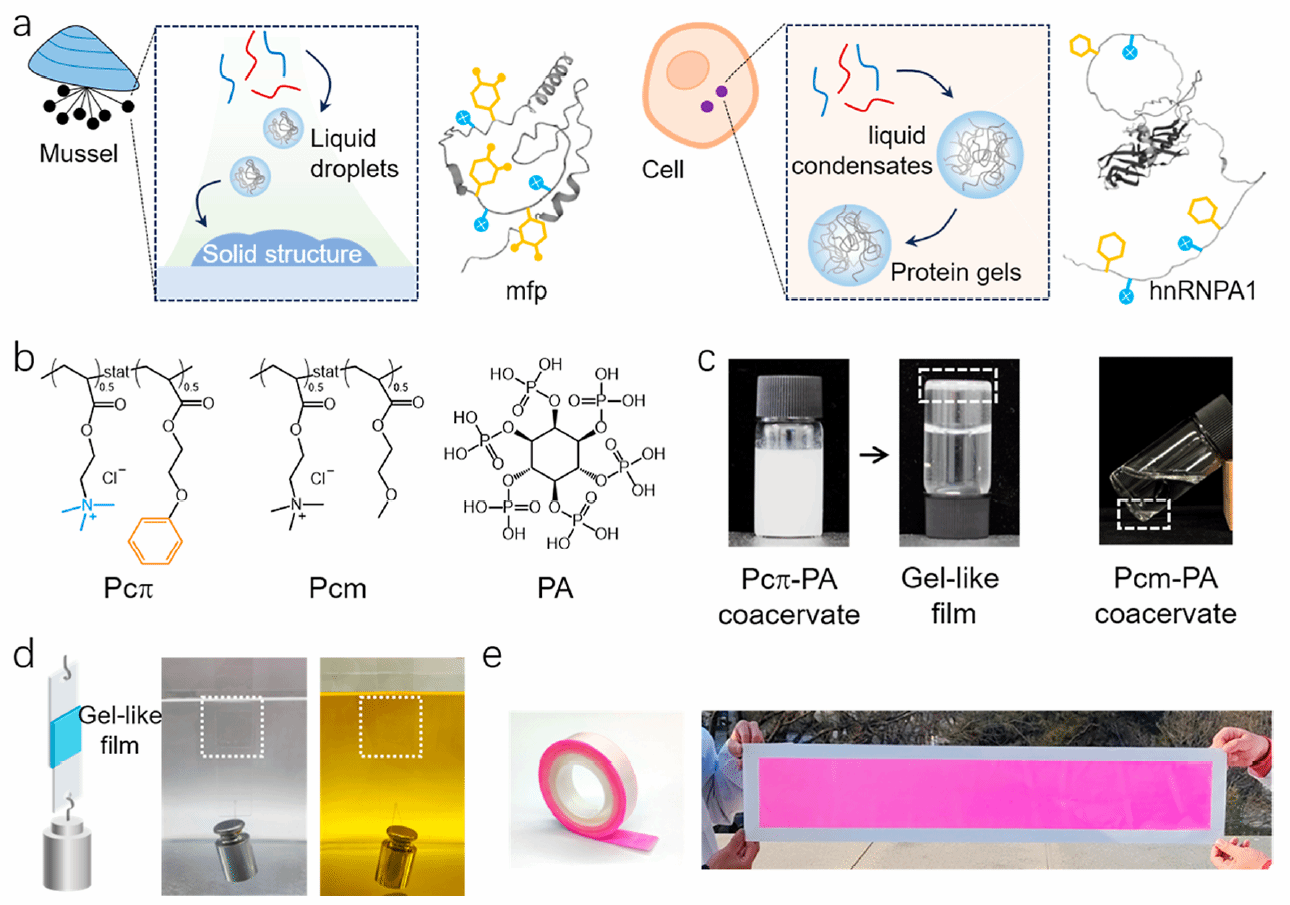Recently, Dr. Hailong Fan, a newly appointed Associate Professor at our college, has made significant progress in the field of underwater adhesive materials. Inspired by the amino acid sequences of intrinsically disordered proteins (IDPs) found in natural phase-separated systems, his team developed a coacervate material capable of undergoing spontaneous liquid–liquid phase separation (LLPS) and phase transition without external stimuli. This material demonstrates exceptional underwater adhesion and remains stable in oil environments. The related research has been published in Macromolecules. Prof. Hailong Fan and Prof. Jian Ping Gong from Hokkaido University are the co-corresponding authors, and the College of Chemistry and Environmental Engineering at Shenzhen University is the first affiliated institution.

Liquid-liquid phase separation (LLPS) of intrinsically disordered proteins (IDPs), followed by a liquid-solid transition, plays a crucial role for wet adhesion in natural systems. Although the mechanisms underlying these phase transitions are not fully understood, the presence of evenly distributed cationic and aromatic in IDPs is believed to facilitate the process. Inspired by this molecular feature, we designed a hydrophobic polyelectrolyte (Pcπ) with statistically distributed cationic and aromatic residues. Pcπ undergoes LLPS through complexation with phytic acid (PA), followed by a spontaneous transition into gel-like films in aqueous media. These Pcπ-PA films exhibit robust adhesion both underwater and under oil, outperforming conventional coacervate-based adhesives. In contrast, a corresponding polyelectrolyte in which the aromatic residues were substituted with methyl groups forms only liquid-like coacervates. This study highlights the critical role of aromatic residues in LLPS and phase transitions, offering valuable insights for developing protein-inspired adhesives capable of functioning in complex environments.

Link to paper:
https://pubs.acs.org/doi/10.1021/acs.macromol.5c02575
